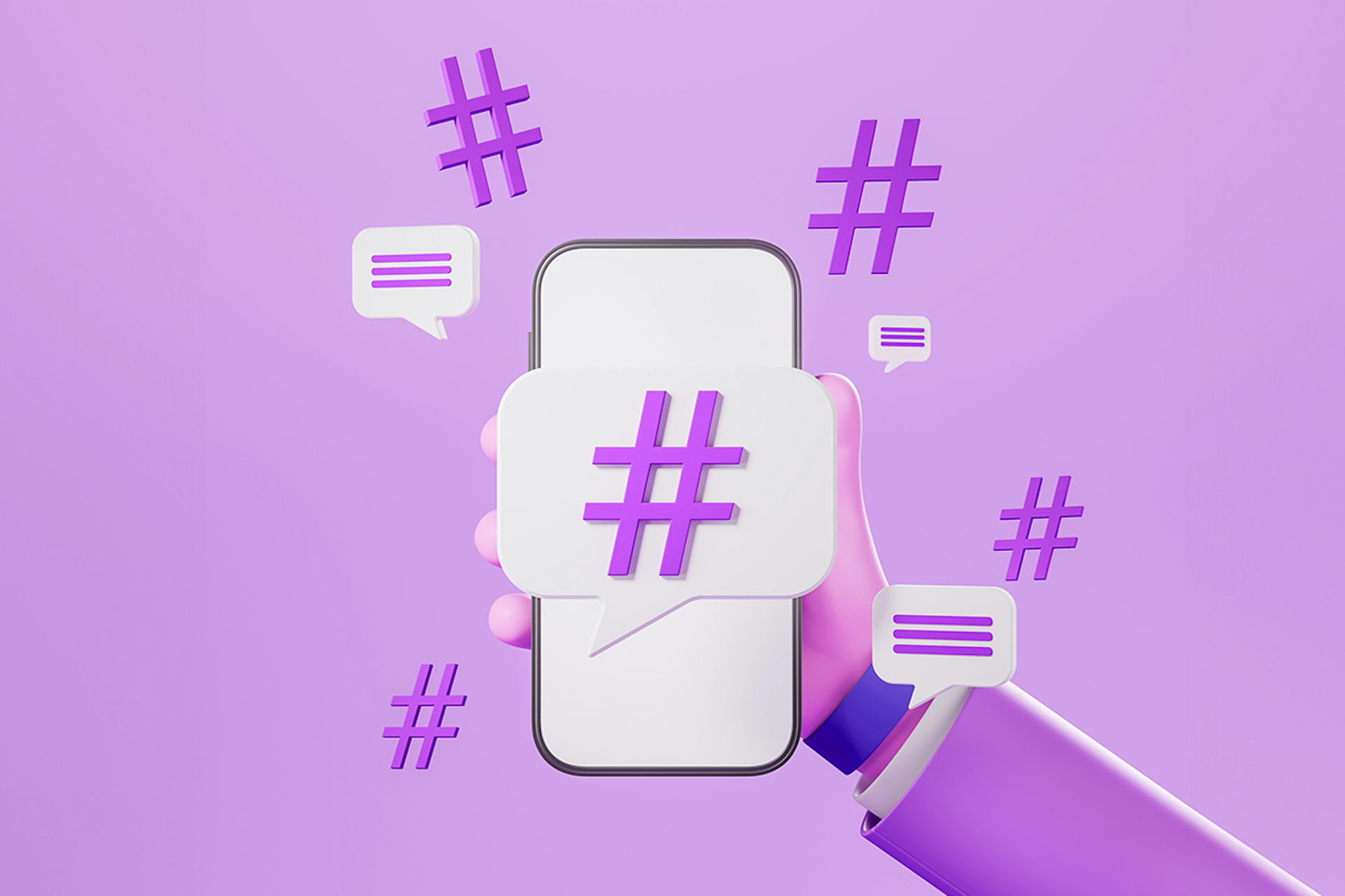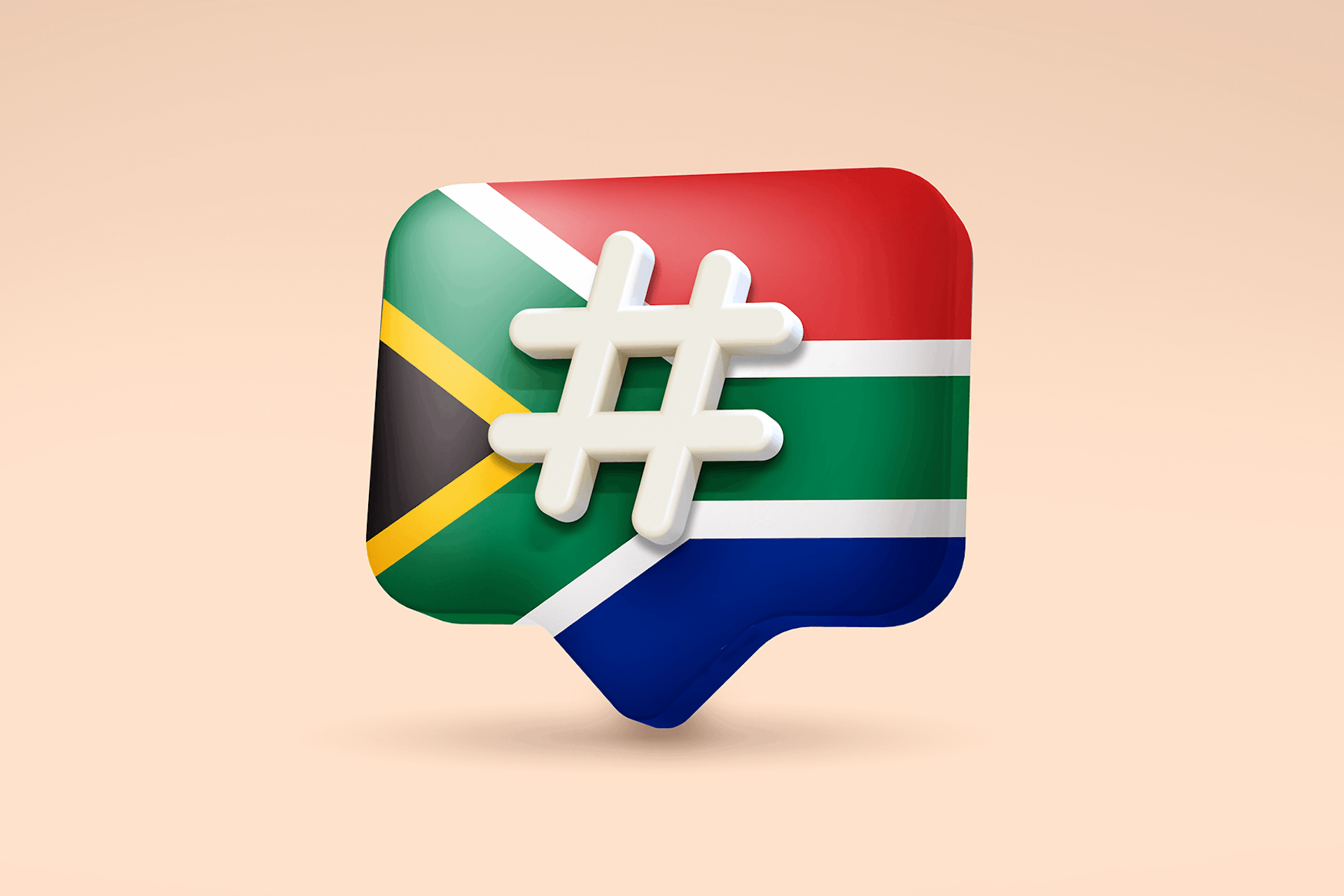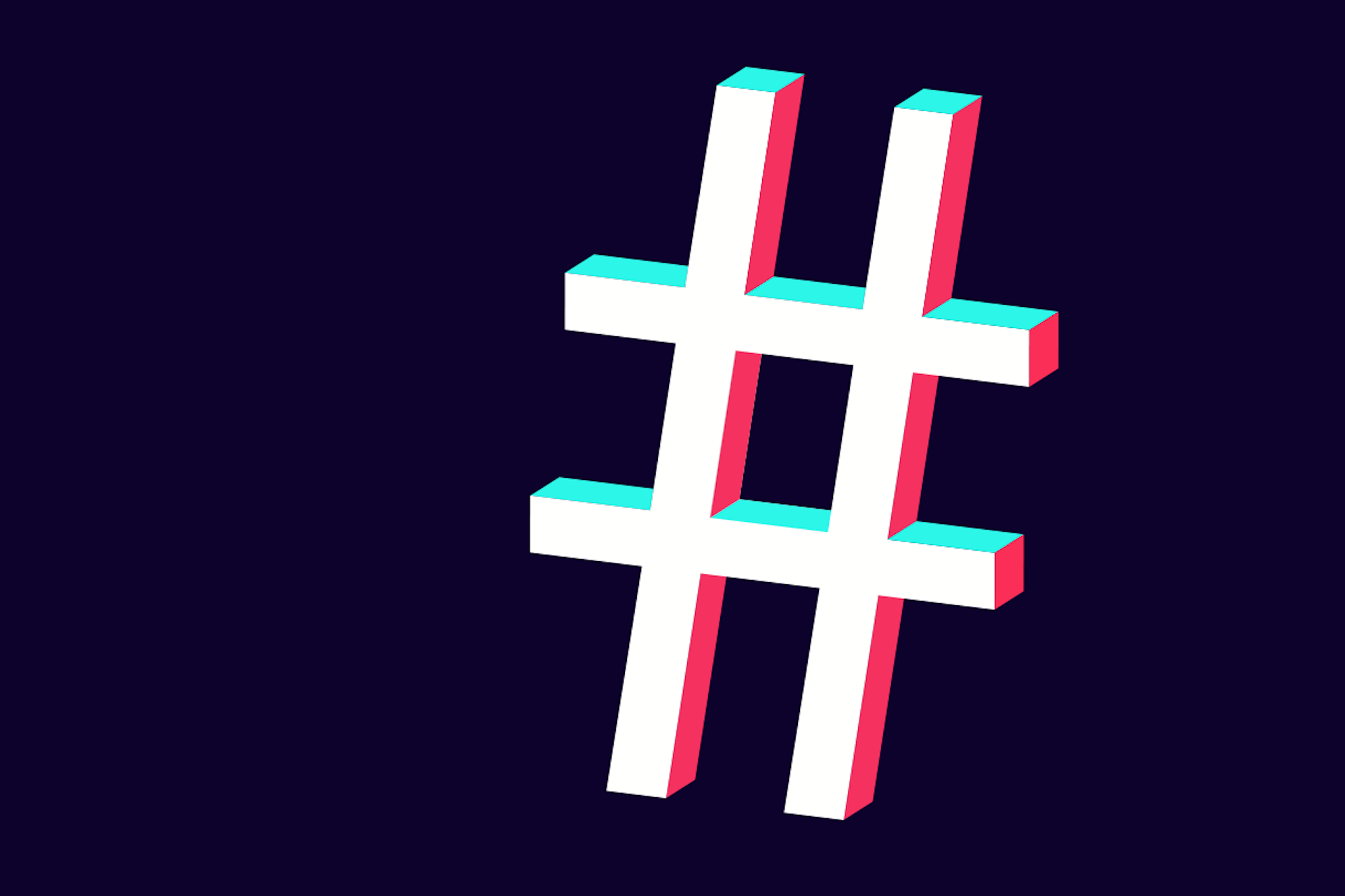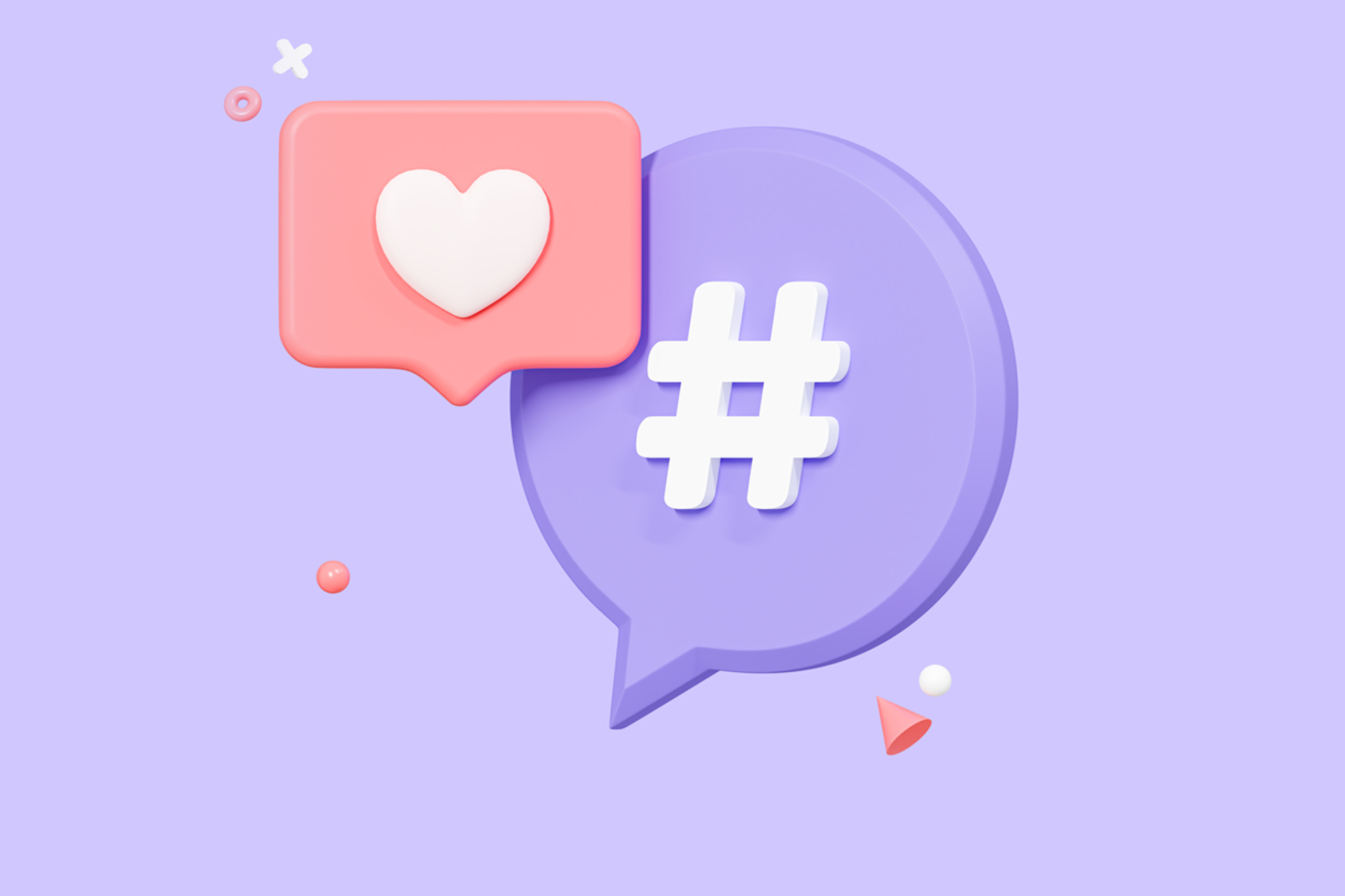In 2007, social technology expert Chris Messina posted a Tweet with the first-ever hashtag. It read: “How do you feel about using # (pound) for groups. As in #barcamp [msg]?”
Since then, the hash or pound symbol has become an ubiquitous symbol on social media. Hashtags are an incredibly useful means of not only categorizing information but also connecting with powerful conversations. In our ultimate hashtag guide, we break down the use of hashtags on Facebook, Instagram, and Twitter/X, and introduce the best practices for hashtagging that any marketing and PR professional in the field of social media management should know.
Table of Contents
What Is a Hashtag?
What Are Hashtags Used for?
How To Use Hashtags on Twitter / X
How To Use Hashtags on Facebook
How To Use Hashtags on Instagram
Things To Note When Using Hashtags in General
How to Find the Perfect Hashtag
Next Steps for Using Hashtags
Tip: Take a look at the best hashtags for #followers.
What Is a Hashtag?
You’ve seen them all over the internet — but what exactly are hashtags and what purpose do they serve?
A hashtag is simply a phrase made up of one or more words, without spaces, denominated with a pound sign (#) in front of it.
For example, the phrase #MeToo is a hashtag. Creating a hashtag is as simple as typing the pound sign and adding keywords after it.
What Are Hashtags Used for?
Hashtags are a way for social media platforms to index conversations made by different accounts on the same topic. For example, the hashtag #PizzaLovers groups posts and discussions about… well, pizza! This feature greatly improves user experience by making content more searchable and accessible.
And while the hashtag was invented for use on X, formerly known as Twitter, many other social media platforms have since adopted their use — including Facebook, Instagram, and TikTok.
Hashtags don’t only serve the purpose of categorizing posts. In recent years, hashtags have been at the forefront of major movements, events, and trends. Here are some examples of how hashtags have been used over the years:
- To log major events: tags such as #GoldenGlobes and #Tokyo2020 help to collate content on recurring or seasonal events.
- To bolster social movements: #MeToo and #BlackLivesMatter are examples of tags that gained enormous momentum on social media, propelling these powerful campaigns forward.
- As a vehicle for information during disasters or emergencies: #BuyFromTheBush was used to support rural businesses in the wake of the Australian bushfires (check out more top-trending Australian hashtags), while #OurHomesAreOpen was used to offer shelter to those displaced by the blast in Beirut. In addition, while hashtags related to COVID-19 were used to talk about the pandemic, they were also used to redirect people to official sources of information.
- As a marker for major trends and other pop culture phenomena: The top viral trends often start as unassuming hashtags — the Dalgona coffee trend, for example, became one of the most popular TikTok hashtags and went viral elsewhere.
- As part of branded campaigns: TikTok campaigns are based solely on hashtags, but they can also be an important part of campaigns on other social media platforms. The #IceBucketChallenge and #Movember are examples of now-iconic campaigns that featured viral hashtags.
However, just because hashtags are useful doesn’t mean they should be used indiscriminately. Littering your posts with hashtags could make your content less effective. In the following portion of our guide, we outline how you can utilize hashtags on X, Facebook, and Instagram.
How To Use Hashtags on Twitter / X
X, formerly known as Twitter, is the birthplace of the hashtag, and this function serves both to index tweets and threads and to increase sociability on the platform. Popular Twitter hashtags are featured prominently on the platform’s app and desktop version as a means of denoting current trends.
Hashtag Guidelines for Twitter / X
- Hashtags can be included anywhere in a Tweet.
- Hashtags should not include spaces or punctuation marks.
- Clicking or tapping on a hashtagged word in any message shows you other Tweets that include that hashtag.
- Tweets on public accounts that include hashtags may be found when you search for a particular hashtag.
- X/Twitter recommends using no more than 2 hashtags per Tweet as best practice, but you may use as many hashtags in a Tweet as you like.
- Twitter discourages brands from using hashtags in their advertisements as this may encourage viewers to click away from the post.
Searching for Hashtags on Twitter / X
Here, we outline how hashtags may be searched for on the Twitter platform, X.
A saved search for #Sydney2000
Advanced search parameters include keywords, hashtags, and languages
Tweets are searchable in both the search bar and the advanced search function. Public accounts with tweets that include the hashtag are displayed and can be sorted according to top posts, the latest posts, user handles that include these keywords, and photo or video posts that include the hashtag. Users can save their searches and easily toggle them in the search bar.
Hashtags are also displayed as top trends on Twitter’s main page. Users are able to explore top trends in their own locale as well in other countries.
Twitter’s Trends page for Australia displaying top topics and tags
Tip: We have a full list of the top-trending Australian hashtags for you!
Tweets on public accounts are also visible within the reply thread of a Tweet that includes a hashtag.
A Tweet including the hashtag #Sydney2000 displays replies to that tweet as well
Examples of using hashtags on Twitter / X
Apart from using X, formerly known as Twitter, to maintain their brand presence and participate in discussions, marketers can also make use of tags to promote their campaigns and increase follower engagement.
Send a message to your team using #NFLTwitter, and you might have YOUR Tweet featured on Confetti in the #SBLIV Celebration. pic.twitter.com/JaFNZ6DpXg
— NFL (@NFL) January 29, 2020
For example, the NFL printed user-submitted Tweets into confetti, which was then used after the final SuperBowl game. This added an interactive element to the game and allowed fans and followers from all over the world to be involved in the action.
The #SuperBowLIV Chiefs victory confetti has tweets from happy fans on it! pic.twitter.com/IxLcL7grgS
— Elanna Rubenstein (@RubensteinESPN) February 3, 2020
Brands that pay close attention to trending hashtags on Twitter may also use them to make a powerful statement. For example, the explosion of #BlackLivesMatter saw it being used over 47.8 million times. Many brands were quick to display their solidarity with the movement — all while being keenly observed by netizens.
“We stand with the black community”
— Mick (@mickjenkins) May 31, 2020
Coming from a corporation.. what does this mean exactly?
Companies that choose to take a stand on social media must be aware that they can be held accountable for their words — brands should take care to formulate actionable policies and follow through with their statements to avoid losing the support of their followers.
Adidas uses Twitter to provide a clear explanation of its initiatives
Useful Resources for Twitter Hashtags
As the birthplace of the hashtag, Twitter often publishes hashtag-based insights that are extremely useful for marketers.
- Twitter releases an annual marketing calendar that includes significant events that brands can Tweet about.
- Twitter also collates annual reports on the top themes and trends based on most-used hashtags.
How To Use Hashtags on Facebook
Hashtag Guidelines for Facebook
- Hashtags can be included anywhere in a post.
- They should not include spaces or punctuation marks.
- Clicking or tapping on a hashtagged word in any post shows you a feed of other posts that include the tag. You may also find related hashtags on the top of that page.
- When searching for a hashtag, you will only find posts that were shared with you (public accounts, or those with an audience that includes you).
- Avoid using too many hashtags per post (1 – 2 is optimal), but there is no limit to the number that can be included.
Searching for Hashtags on Facebook
Users are able to use the search bar on Facebook to access hashtagged posts on public accounts. While the majority of posts on Facebook are limited to an account's personal audience, hashtags may still be useful for brands looking to make their campaign posts more searchable.
A search for #Sydney2000 on Facebook may not yield results as diverse as those on Twitter, but is still useful in displaying features from brands like news outlets
This function, however, works great for video content as it helps redirect viewers to more videos from the same content series or channel.
The hashtag #CrashTestBeauties helps to group beauty label Ipsy’s content series, especially for those browsing on Facebook’s Watch tab
Using Hashtags on Facebook
Facebook and Instagram are often used in tandem to promote similar content. However, brands must note that using the same hashtags for Instagram and Facebook is not always ideal. After all, brands often include up to 30 hashtags on Instagram, while including only a few (or none at all) on Facebook.
For example, TOMS includes multiple relevant hashtags (including #GunViolencePrevention, #EndGunViolenceTogether, and #BlackLivesMatter) on their Instagram post, but uses only one Facebook hashtag for a similar post.
An Instagram post on TOMS’ page
We’re always excited to share our platform with our Giving Partners! Today Erica Ford, founder of LIFE Camp, Inc, tells...
Posted by TOMS on Monday, August 17, 2020
The same post is adapted for Facebook by reducing the number of hashtags used
As such, while Facebook hashtags are still useful for cataloging purposes, they should be used sparingly and purposefully to maximize their impact.
How To Use Hashtags on Instagram
Hashtag Guidelines for Instagram
Hashtags are the best way for your posts to get noticed. Instagram posts with at least one hashtag get 12.6% more engagement than those without.
- Hashtags can be included anywhere in a caption or comment.
- They should not include spaces or punctuation marks.
- Clicking or tapping on a tagged word in any post shows you a feed of other posts that include the hashtag.
- When people with private profiles tag posts, they won't appear publicly on hashtag pages.
- Users can only tag their own posts.
Searching for Hashtags on Instagram
Instagram users can search for them through Instagram’s search bar. This displays a hashtag feed for that tag. Posts are organized according to top posts or recent uploads. Followers of a certain hashtag are provided with an update of a few top posts each week.
A search for #Sydney2000 displays the posts containing the hashtag. Posts on Instagram often include multiple related hashtags.
During the COVID-19 pandemic, Instagram has also taken steps to help lead users to accurate sources of information. When users search for keywords related to the pandemic, they receive an alert offering to connect them with official sources of information.
When a search is performed for topics surrounding the coronavirus, they receive an alert offering to connect them to official sources of information such as the WHO and local health ministries.
Using Hashtags on Instagram
Unlike with Twitter and Facebook, where individuals and brands use hashtags rather sparingly, Instagram is a platform where more is, in fact, more. Influencers and brands want to keep their content as visible and searchable as possible. This often means that companies include their own branded hashtag in their posts. In addition, with FTC regulations, influencers are now required to explicitly disclose their collaborations with brands — and hashtags are a way to do that. Think #ad, or #sponsored.
In addition, trending topics and themes are also a big part of hashtagging on Instagram. Popular Instagram hashtags related to fashion, beauty, or fitness house millions or even billions of posts.
The #fitness hashtag on Instagram holds over 413 million posts, and comprises everything from selfies to sponsored posts from influencers and public Instagram Stories.
Tip: These are the top South African fitness influencers.
However, this doesn’t mean that brands should use 30 hashtags in every post. Posting multiple irrelevant hashtags or including banned ones could well mean that your post does not appear at all (the infamous shadowban).
Even though Reuters’ post includes multiple hashtags, they are all related to the brand, caption, or image themes. Popular trends are also included, such as #picoftheday and #bestoftheday.
The best policy for brands is to therefore keep an eye on relatable themes and to use them in tandem with relevant topics. A rough guideline for this is as follows:
- Use at least 3-5 popular hashtags. These are hashtags that have around 500,000 to a million posts associated with them. Avoid hashtags with more than a million results as they usually attract spam bots and fake engagement.
- Use at least 3-5 moderately popular hashtags. These are hashtags with high tens of thousands of posts up to the mid-hundreds of thousands.
- Use at least 3-5 niche hashtags. These are hashtags with usually less than 25,000 posts associated with them and that are specifically targeted to what your business does and the solution or product you offer.
- Use 1-3 branded hashtags. This is especially useful for PR professionals looking to dip into existing features for better fan engagement. Content that includes branded hashtags garners better traction and helps the Instagram algorithm recognize them.
Tip: hashtags don’t have to be used solely in posts! They can be included in your Instagram Stories as well — use them when you launch a new content series, product, or campaign to draw attention to your efforts. Location tags and hashtags on public stories will also show up in their respective hashtag and location stories.
A hash and geo-tagged story by Frederik Trovatten populates on the Mexico City and #StreetPhotography stories
Why Using the Most Popular Hashtags is Not Recommended
Many people think that using the most popular hashtags will result in higher views. Take note though, a very popular keyword can drown your post in a sea of similar photos. To safeguard against this, choose a keyword that lies somewhere in the ‘magic middle’ or in between very generic and not so known.
A better way to increase relevancy and engagement with fans is to choose hashtags that are more topic or category based. Even better is to take into account the gender and age of your audience to maximize relevancy.
For example, if a coffee shop in Seattle wants to get noticed, it should avoid using the generic hashtag #coffee because the post would get lost in the flood of pictures that are tagged with one of the most popular hashtag on Instagram.
Instead, the coffee shop should narrow their choice of hashtags to #SeattleCoffee, #SeattleEats or #SpecialtyCoffee. By wording the hashtags to a specific year and location, the company creates a more unique reference to its product promotion and thereby increases its views and engagement.
Things To Note When Using Hashtags in General
Now that we’ve established how hashtags work on various social media platforms, you may be eager to start reaping the benefits of these tags — and while hashtags are indeed an invaluable part of PR and marketing efforts, there are still some pitfalls that must be avoided:
- Hashtags that are too broad or specific
- Hashtags that are too long or complicated
- Hashtags that appear or sound inappropriate or off-putting
- Hashtags that are ill-timed
- Hashtags that are already in use by another person or brand (or even your competitors!)
- Hashtags that are too similar to other existing tags
- Hashtags used only for the purpose of trend-jacking or newsjacking for the brand’s own benefit
While it is impossible to avoid using tags that multiple accounts rank for, it is important that brands use interesting and relevant hashtags for their campaigns or product launches. These tags can be both evergreen or seasonal to match their respective intentions and audiences.
In addition, hashtags can often be misinterpreted even if they seem alright on paper. New hashtags should be used with caution and timed appropriately — beware of the backlash that can result from careless planning.
How to Find the Perfect Hashtag
If you’re not already using a social listening tool like Meltwater to automate your research process and find the best hashtags for followers, these tips will guide you:
I. Volume
To find the perfect hashtag, there are several factors to consider. First, check the search volume surrounded around the specific keyword. With a higher volume score, it’s more likely fans will be exposed to and notice your post. Again, take heed that the tag is not too generic. For example, specialty coffee lovers should use a tag in the golden ‘magic middle’ like #latteart, not simply #coffee.
You can check the volume of your keyword by typing the tag into the Instagram search bar. If you choose your hashtags based on this method, be sure to check the relevancy of the posts after searching the keyword.
For the more serious users, the Meltwater Influencer Marketing database provides a more in-depth solution to finding the perfect hashtag. Simply search a campaign or product hashtag, like #GapLove for example, and the database will compile all the data on Instagram relating to the search. You’re left with a comprehensive and detailed breakdown of the dominant gender, top age group, top country, and more.
This data helps the user understand where exactly the volume is coming from. In this example, #GapLove has a strong women audience aged 18-24 from the United States.
II. Difficulty
The word or phrase of the hashtag itself can matter a great deal. For example, #visitNYC is much more common hashtag than #visitnewyorkcity.
Considering a hashtag by its simplicity or difficulty is a common practice just like with any SEO research. Prioritize the hashtags you choose based on how people use it on Instagram, and not as they would outside of the social network.
III. Relevancy
Being in the right place in the right time is an incredibly important part of this hashtag success equation. A great way to make sure this happens is this is through Meltwater. The platform helps zone in on a specific location, field of interest, relevant age group, and gender for a keyword. This feature bolsters the search for a hashtag that matches a post to the right type of audience.
From here, the advantages of the tool transpires as the user can pinpoint to whom exactly is using the hashtag, illuminating the types of people involved in the conversation about the brand or product.
Opportunity Score
After this due diligence, use the three criteria (1) Volume (2) Difficulty, and (3) Relevancy, to determine an opportunity score. In other words, these benchmarks will help you assess the likelihood of your chosen hashtag in capturing its target audience, expanding your reach, and maximizing engagements.
8 Hashtag Marketing Strategies
Use these examples of great brand hashtag usage to inspire your next campaign!
1. Location-Based Hashtags
Goal: If you want visitors to your store, museum, city, etc.
This is a hashtag strategy that reflects a location. It uses online power to promote IRL traffic.
Example: #TheVesselNYC
The Vessel is a new tourist attraction in New York, that opened in 2019 and was immediately hot on Instagram. Made of 154 connecting staircases, the structure is a dream for anyone looking for an Instagramable moment.
On the location’s Instagram page it encourages people to share content with the hashtag #TheVesselNYC. The use of this hashtag helps market The Vessel with user-generated content and offers visitors a chance to be featured on the Vessel’s official Instagram page.
2. Branded Hashtags
Goal: Brand awareness and user-generated content.
Branded hashtags are pretty straightforward, they promote your brand. If hashtags are ways to filter content, then having a branded hashtag is a great way for users to find content related to your brand.
Example: #burtsbees
Beauty brand Burt’s Bees constantly uses a brand hashtag in posts, and their loyal followers are quick to follow suit. From make-up artists to lovers of their honey lip balm, it’s a great way to show followers the brands you identify with.
Example: #KeepCup
Reusable cup brand Keep Cup is very popular among the influencer community. Snapping a pic of the product is a clever way of promoting environmental values. Thanks to a branded hashtag, KeepCup can easily discover and repurpose user-generated content.
3. Community Hashtags
Goal: Unity in the community!
A community hashtag is different from a branded hashtag, it is a way to unite your followers on a common value, idea, or topic. This lets your followers post branded content while subscribing to your brand message. The hashtag should be something catchy, yet capable of conveying your brand value.
Example: #NARSissist
Beauty brand NARS calls their followers “NARSissist?”, and it’s a compliment. Narcissists are NARS make-up fans who are risk-takers and rule-breakers. Users can post content with NARS products with the hashtag to show that they are creative trendsetters, as any NARS user should be.
Example: #8hoursleepchallenge
The best thing about community brands is that they are relevant to every industry. Take Tuft&Neddle, a mattress and bedding brand known for quick delivery and easy unpacking. The brand uses the hashtag #8hoursleepchallenge to have the audience promote the positive benefits of Tuft&Needle products. Seriously, who doesn’t want 8-hours of sleep?
4. Holiday Hashtags
Goal: Share your values
Holidays hashtags are a great way to connect your brand to a holiday or cultural event. It helps people associate your brand with specific times of the year and values.
Example: #ProudInMyCalvins
As a brand, Calvin Klein has been very vocal about their values. And, one holiday they love is Pride. In 2020 the brand ran a campaign during Pride month with the hashtag #ProudInMyCalvins. This strategic hashtag marketing campaign allowed the hashtag to be used by influencers as well as the extended Calvin Klein community who identified with the campaign’s values.
5. Niche Hashtags
Goal: Connect with the die-hard fans
Niche hashtags are anything denoting or relating to products, services, or interests that appeal to a small, specialized section of the population.
This hashtag marketing strategy resonates with a specific community, but might not have meaning outside. It can transcend a brand to cult-status, and really emphasizes the loyalty of the network.
Example: #PSL
Do you even know what this means? Nope, not Play Station Live, Guess again. Unless you’re a true, die-hard, Starbucks fan this will presumably go straight over your head. #PSL = Pumpkin Spice Latte, a hashtag used to promote everyone’s favorite fall beverage.
6. Social Movement Hashtags
Goal: Raise awareness for an important cause or social issue
What do social movements and social media have in common? No, it’s not the word social, it’s the innate ability to drive conversation and unite individuals with a shared message. Almost all recent social movements have developed online using a hashtag that drives the importance of the movement. Think #MeToo or #BlackLivesMatter.
Tip: Measure your success with a Social Listening tool like Meltwater
Example: #ArtHero
#ArtsHero is a grassroots campaign raising awareness for the Defend Arts Worlds Now (DAWN) Act and is asking for financial relief towards the arts and cultural industry due to the impact of COVID-19. The hashtag has been used by industry professionals, fans of the art, and those in support of the DAWN Act.
7. TikTok Brand Campaigns
Many brands are still finding the best hashtags for followers on TikTok, as such, there isn’t a clearly defined hashtag etiquette the way we are seeing on Instagram. But, hashtags are still super relevant on TikTok. They are used to filter content and are a great way for users to discover your brand.
Still, it’s hard for some people to understand what is happening on TikTok. Kids these days. An irreverence and irony exist on TikTok, which we don’t see so much on other platforms. Approach TikTok with an open-mind good sense of humor, it’s not a Ted Talk.
Example: #TossYourCap
TikTok is all about the fun and breezy challenges. In honor of the 2020 graduating class, T-Mobile asked graduates to post a video tossing their graduation caps in the air. The brand vowed to donate $5 for every post.
8. TikTok Dance Challenges
Ever seen a child or young-adult dancing into their phone in a public space and thought, “huh”? Don’t fret, it’s just a TikTok dance challenge.
Songs with a catchy 15-second hook are often set to choreography and then turned into challenges.
Example: #supalonely
Dance content is transforming music artist’s discoverability. Many songs and artists get their initial fame on TikTok, which many say is changing the music industry.
Example: #fliptheswitch
What’s great about these dance challenges, and TikTok for that matter, is that anyone can participate. It’s a great way to show an alternative personality, and a more light-hearted, relatable side of your brand.
Next Steps for Using Hashtags
Now that you’ve successfully learned how hashtags work, you should also track your campaigns to see just how effective they are! Meltwater’s media monitoring solution allows you to monitor over 15 different social networks so that you can keep abreast of the chatter around your brand. Fill in our form to find out more!








